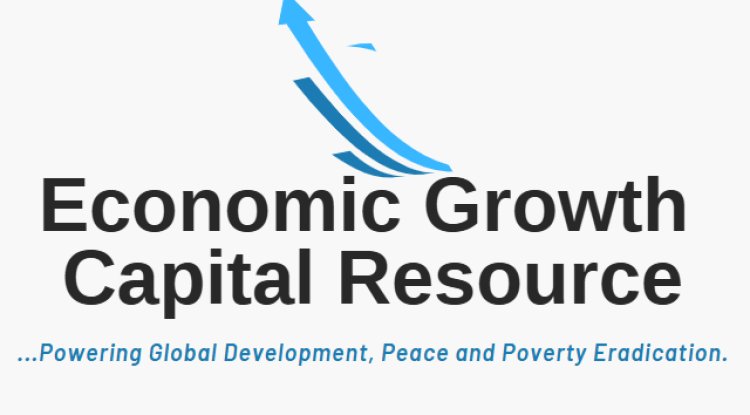BUILDING DIRECT PARTNERSHIPS FOR ECONOMIC GROWTH
In our contemporary, ever-changing world characterized by interconnectivity and dynamism, partnership emerges as the bedrock upon which successful economic development is built. Governments, cities, counties, private utility companies, developers, and an array of stakeholders from both the private and public sectors have all recognized the indispensable value of collaboration. They embrace the profound realization that by actively seeking opportunities to share information, pool resources, and forge alliances around common projects, communities can be empowered to harness the full potential of development prospects. This approach ensures that communities are well-prepared and equipped to thrive in the face of evolving economic landscapes.

Here we delve into the significance of collaboration and highlights various ways to identify potential partners, both locally and internationally, to foster the growth and development of sub-national economies. Furthermore, it presents a stepwise approach to streamline the partnership process, catering to external and internal partners' needs and preferences. The ultimate goal is to build and nurture meaningful relationships that benefit the partnering entities and the communities and individuals they serve.
The government plays a crucial role in spearheading direct partnerships for economic growth. Recognizing the immense potential in forging alliances, governments are increasingly adopting a proactive approach to engage with diverse stakeholders. Governments can tap into a wealth of knowledge, resources, and expertise by working with cities, counties, and private sector actors, fostering an environment conducive to sustainable development.
Strategic planning forms the foundation of any successful economic development initiative. Through their multifaceted roles, governments are uniquely positioned to drive these efforts by providing the vision and framework necessary for collaboration. By creating a roadmap that outlines clear objectives and delineates the roles and responsibilities of each partner, governments pave the way for effective cooperation and alignment of interests.
However, the true power of partnership lies in its implementation. Governments must actively foster an environment that encourages open dialogue, information sharing, and resource pooling. By leveraging the strengths of each partner, economic development initiatives can be brought to fruition with greater efficiency and efficacy. The government's role in this regard is to act as a facilitator, ensuring that the necessary infrastructure and support systems are in place to enable successful collaboration.
wsandn.org
Identifying Potential Partners: Local and International Organizations
In today's globalized world, fostering economic growth at the sub-national level requires a strategic and collaborative approach. Recognizing this, establishing cross-sector and interdisciplinary cooperation, coordination, and collaboration become paramount. This strategic pathway encompasses all levels of government, the geospatial industry, the private sector, academia, and the international community as essential partners. Sub-national economies can create and sustain value while addressing common needs, aspirations, and goals by cultivating a culture based on inclusion, trusted partnerships, and strategic alliances.
At the heart of this approach lies the process of identifying potential partners, both locally and internationally. These partners drive sub-national economic development, contributing resources, expertise, and diverse perspectives. By forming alliances with the right organizations, sub-national entities can tap into vast opportunities, leverage global knowledge and networks, and achieve their development priorities and outcomes effectively.
Local organizations serve as the foundation for building successful sub-national economies. They possess invaluable knowledge of the local landscape, community dynamics, and unique challenges. Local governments, for instance, play a vital role in providing governance, infrastructure, and policy frameworks that foster economic growth. They act as catalysts, driving development initiatives and facilitating stakeholder collaboration.
In addition to local governments, engaging local businesses, industry associations, and chambers of commerce is crucial. These organizations are deeply invested in the success of their communities and possess a wealth of sector-specific expertise. Sub-national entities can access industry insights, mentorship, financial support, and market opportunities by partnering with them. This collaboration helps nurture entrepreneurship, attract investments, and promote local innovation.
Moreover, local educational institutions and research centers can be valuable partners in sub-national economic development. These institutions contribute to human capital development, research and development, and innovation ecosystems. Knowledge transfer, skill-building, and technology adoption can be accelerated by fostering collaborations between academia, industry, and government, leading to increased competitiveness and economic diversification.
While local partnerships are essential, embracing international organizations can significantly enhance sub-national economic development. International partnerships provide access to global best practices, expertise, and funding opportunities. Collaborating with international organizations such as multilateral development banks, United Nations agencies, and regional economic organizations can open doors to capacity-building programs, technical assistance, and international cooperation frameworks.
International development agencies also play a crucial role in supporting sub-national economic growth. These agencies provide financial resources, technical expertise, and policy guidance. By aligning sub-national priorities with international development goals, entities can leverage partnerships with these agencies to address pressing challenges, such as sustainable urbanization, environmental conservation, and social inclusion.
Moreover, engaging with international businesses and investors can boost sub-national economies through trade, foreign direct investment, and technology transfer. These partnerships can attract capital, stimulate job creation, and exchange knowledge and skills. By positioning themselves as attractive investment destinations and leveraging international networks, sub-national entities can tap into global value chains and enhance their competitiveness in the global marketplace.
Identifying potential partners, both local and international, requires a systematic approach. Here are some key steps to consider:
Conduct a Stakeholder Analysis
Begin by identifying and mapping relevant stakeholders in the sub-national ecosystem. This includes local governments, businesses, educational institutions, research centers, industry associations, international organizations, and development agencies. Understand their roles, interests, and potential contributions to sub-national economic development.
Define Partnership Objectives
Clearly articulate the objectives and outcomes you seek to achieve through partnerships. This could include access to funding, knowledge transfer, technology adoption, market expansion, or capacity-building. Align these objectives with the broader sub-national development priorities and ensure they are realistic and measurable.
Prioritize and Segment Partners
Prioritize potential partners based on relevance, capacity, and alignment with your objectives. Segment them into categories such as government, industry, academia, and international organizations to facilitate targeted engagement strategies.
Develop a Partnership Strategy
Create a comprehensive partnership strategy that outlines the approach, key activities, and timelines for engagement with potential partners. Consider factors such as resource allocation, communication channels, and monitoring mechanisms. Tailor the strategy to the specific needs and preferences of each partner category.
Engage in Outreach and Networking
Contact potential partners through networking events, conferences, workshops, and targeted communication channels. Seek opportunities to showcase your sub-national entity' strengths, development plans, and potential partnership benefits. Foster relationships based on trust, mutual respect, and shared values.
Establish Collaboration Mechanisms
Once partnerships are formed, establish clear collaboration mechanisms to facilitate effective communication, decision-making, and resource-sharing. This may involve regular meetings, joint working groups, information exchange platforms, and collaborative projects. Define roles and duties to ensure accountability and enhance collaboration impact.
Monitor and Evaluate Partnerships
Monitor and assess the success and impact of collaborations on an ongoing basis. Regularly examine if collaborations deliver the intended results and adjust strategies if required. Maintain open lines of communication with partners to address challenges, share successes, and identify opportunities for improvement.
By following these steps, sub-national entities can identify, engage, and nurture potential partners to drive economic growth effectively. Partnership building is an ongoing endeavor requiring constant adaptation to evolving needs and opportunities. Through strategic collaboration with local and international organizations, sub-national economies can unlock their full potential, create sustainable value, and pave the way for prosperous and inclusive communities.
wsandn.org




















